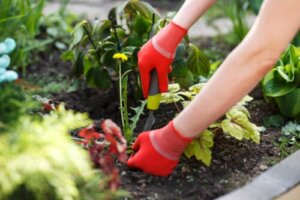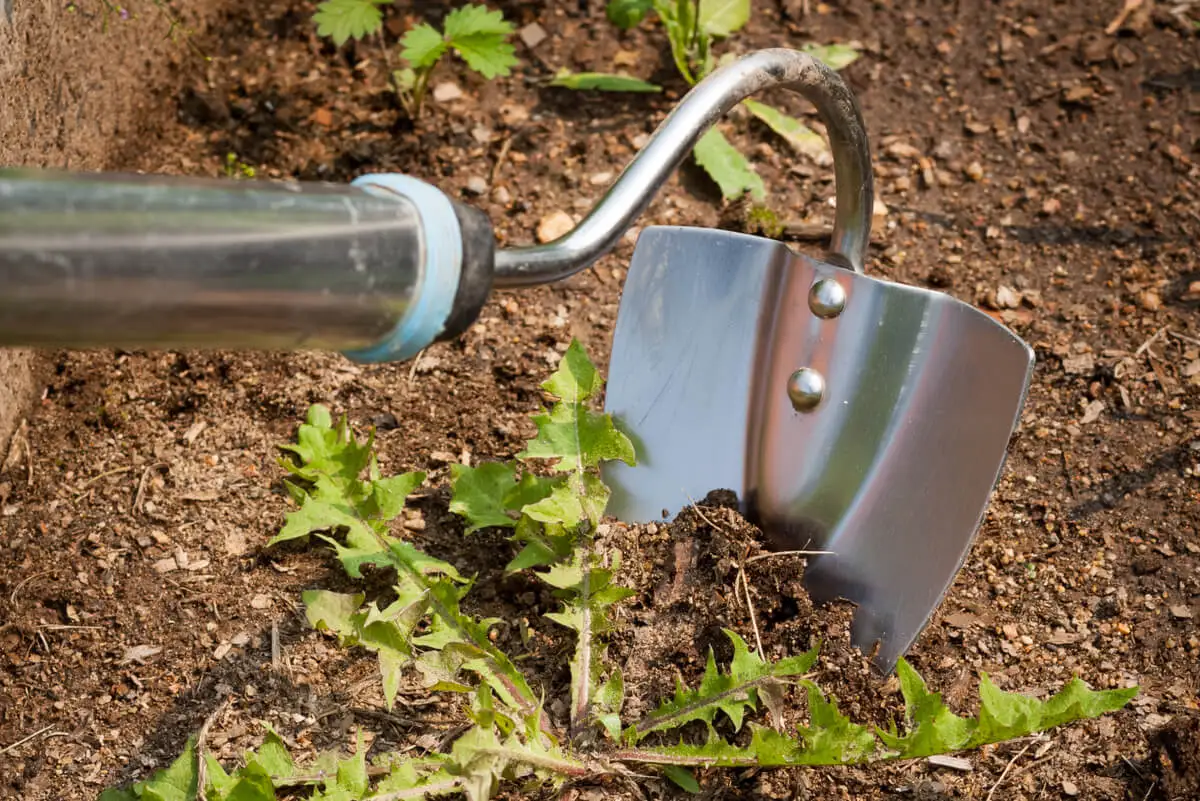Tools to Eliminate Weeds in Your Garden

When we talk about a garden, we tend to think of a space full of beautiful flowering plants, such as bougainvilleas, geraniums, daisies, roses, vines, fruit trees, and all beautiful ornamental plants. However, there are some not-so-friendly or pretty plants that may also be present, such as nettle, known as weeds.
These are invasive species that affect the garden and lead us to the task of performing maintenance to keep our plants healthy. It’s a task that must be done with some frequency in balance with nature, as well as with the care of aesthetics. For this reason, in this article, we’re going to talk about the best tools to eliminate weeds.
It’s advisable to remove them to avoid competition for space, light, hydration, or nutrient absorption between weeds and ornamental or food plants. Also, it’s a good idea to do this as a matter of aesthetics or beautification of green areas.
However, it’s important to clarify that, although we call them weeds, it doesn’t mean that they do not have some benefits. On the contrary, many can be used as a home remedy or have some function within the ecosystem.
We think you may also enjoy reading this article: How to Use Neem Oil to Look After Your Garden Plants
What tools can we use to eliminate weeds in the garden?
To eliminate weeds in the garden, there are a variety of tools and products. In fact, you should not have just one, but several, as they can complement each other.
To begin with, we advise you to have a gardening kit, which you will find on sale in chain stores or in various establishments specialized in agriculture.
This kit usually contains gardening gloves, a rake, a small fork, and a shovel. In addition, you should have scissors or pruning shears.
Gloves
A pair of gardening gloves is probably the basic tool for gardening. Gloves are important to protect the skin of your hands from scratches or injuries, as well as to keep them clean of soil.
Weeding is a task that can be done by hand, so you need gloves, which are usually inexpensive and sturdy.
Ideally, you should always pull weeds by hand as soon as they appear in the soil. However, this is not always possible, because their growth is not always detected in time. For effective and quick manual weeding, it’s best to use wet soil.

A shovel and a rake to eliminate weeds
Since not all weeds are easy to pull up by hand, it’s also a good idea to use a shovel and rake. They’re ideal for loosening the roots of the weeds and pulling them out whole. If the roots are not removed, weeds will come back in a few weeks.
A rake is a fork-like tool with a serrated bar that helps to drag and remove debris from the surface. It also helps separate roots for deep pulling.
A hoe
The hoe, also known as a bine, is a tool characterized by a somewhat curved metal plate that’s longer than it is wide. It has a wooden handle that makes it easy to grip.
It’s used to remove soil in-depth, especially in large spaces, cutting weeds at the root. It’s ideal for removing stubborn weeds and weeds around trees, shrubs, or larger plants.
A lawn mower
This is a lawn mower or trimmer. There are two options for this tool: a manual and a motorized one.
A lawn mower usually has several stainless steel blades that allow cutting the grass in the green areas of the home. After passing this tool, our garden will be left with a green and soft carpet appearance.
We think you may be interested in reading this, too: How to Use Recycled Glass Bottles to Decorate your Garden
Scrapers to eliminate weeds
This is a useful tool to remove weeds from difficult terrains, where there are stones on paths, bricks, or cobblestones. Weeds often grow in these areas. Although it may seem harmless as a small seedling there, it can cause damage to soils and even lift them in time.
A natural or chemical herbicide
Herbicides are products used to kill unwanted plants. They’re usually liquids that must be put on the weeds to prevent them from growing in the area.
For this reason, be cautious with their use in case they’re very close to ornamental or food plants. In the latter case, it’s also necessary to be very careful with chemical herbicides.
If you want a natural alternative, vinegar is an excellent choice. There’s also a wide variety of homemade formulas to eliminate weeds, using products such as garlic or chili. They’re also products that will prevent the presence of pests.

Prevention measures when using weed tools
As the popular saying goes, “prevention is better than the cure.” For this reason, it’s important that you take some control measures so that weeds don’t appear in your garden in the first place.
The Valencian Institute of Agricultural Research states, in one of its manuals, that it’s a good idea to control water in irrigation, clean agricultural machinery, and tools, use good quality seeds, and use clean soil, among other factors.
We recommend that, before using any of the tools to eliminate weeds that we’ve mentioned in this article, you read the instruction manual for their use. Also, many of these implements or products are sharps, corrosive or irritating, so they’re not recommended for children.
Ideally, you should have an insulated storage room or room to keep garden items. It’s common for people to leave them abandoned in green areas. However, they will rust and get damaged very quickly.
Finally, it only remains to tell you to enjoy gardening. In fact, it’s a very beneficial activity. On the one hand, it helps to reduce stress and is a nice pastime.
On the other hand, a sustainable garden helps to preserve biodiversity and beautify spaces. If it’s a vegetable garden, you will also be able to harvest your own food.
All cited sources were thoroughly reviewed by our team to ensure their quality, reliability, currency, and validity. The bibliography of this article was considered reliable and of academic or scientific accuracy.
- Instituto Valenciano de Investigaciones Agrarias. CONTROL DE LA FLORA ESPONTÁNEA MEDIANTE MÉTODOS NO QUÍMICOS [Internet]. Valencia, España; 2016. Available from: http://www.ivia.gva.es/documents/161862582/163262603/Control+no+quimico+malas+hierbas.pdf/6bb913f8-cf5f-4192-8703-6b5a11594a99
- (s/f). Guía del jardín sostenible Mucho más que un jardín. Madrid.es. Recuperado el 11 de mayo de 2022, de https://www.madrid.es/UnidadesDescentralizadas/Educacion_Ambiental/ContenidosBasicos/Publicaciones/HuertoJardineria/GuiaJardinSostenible.pdf
This text is provided for informational purposes only and does not replace consultation with a professional. If in doubt, consult your specialist.








